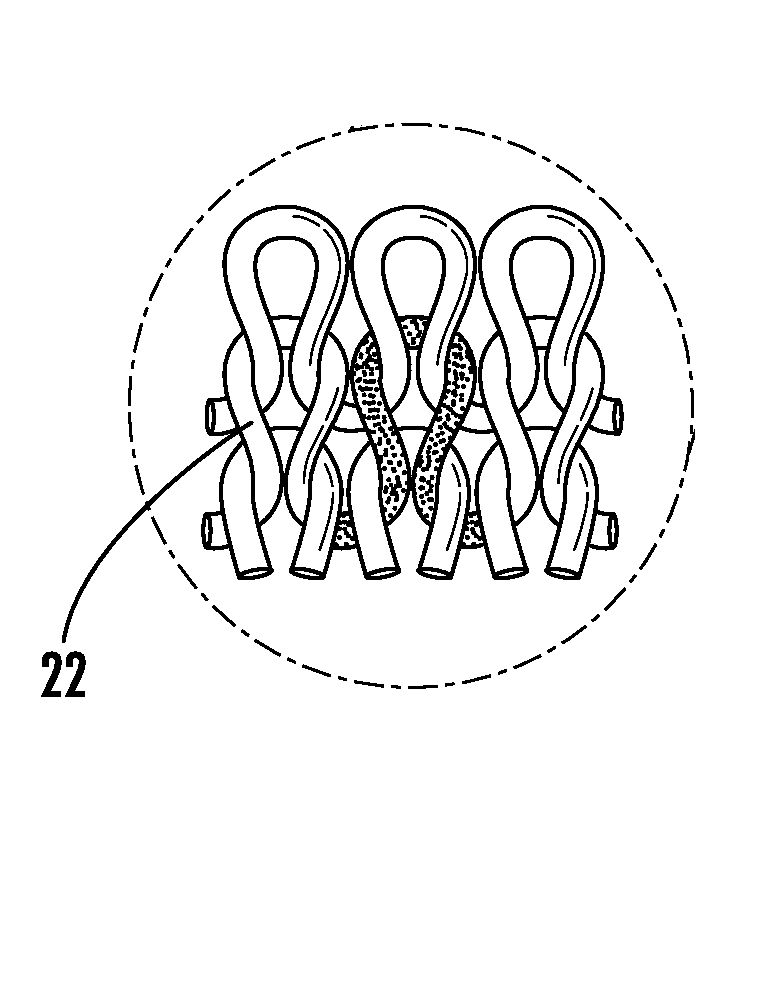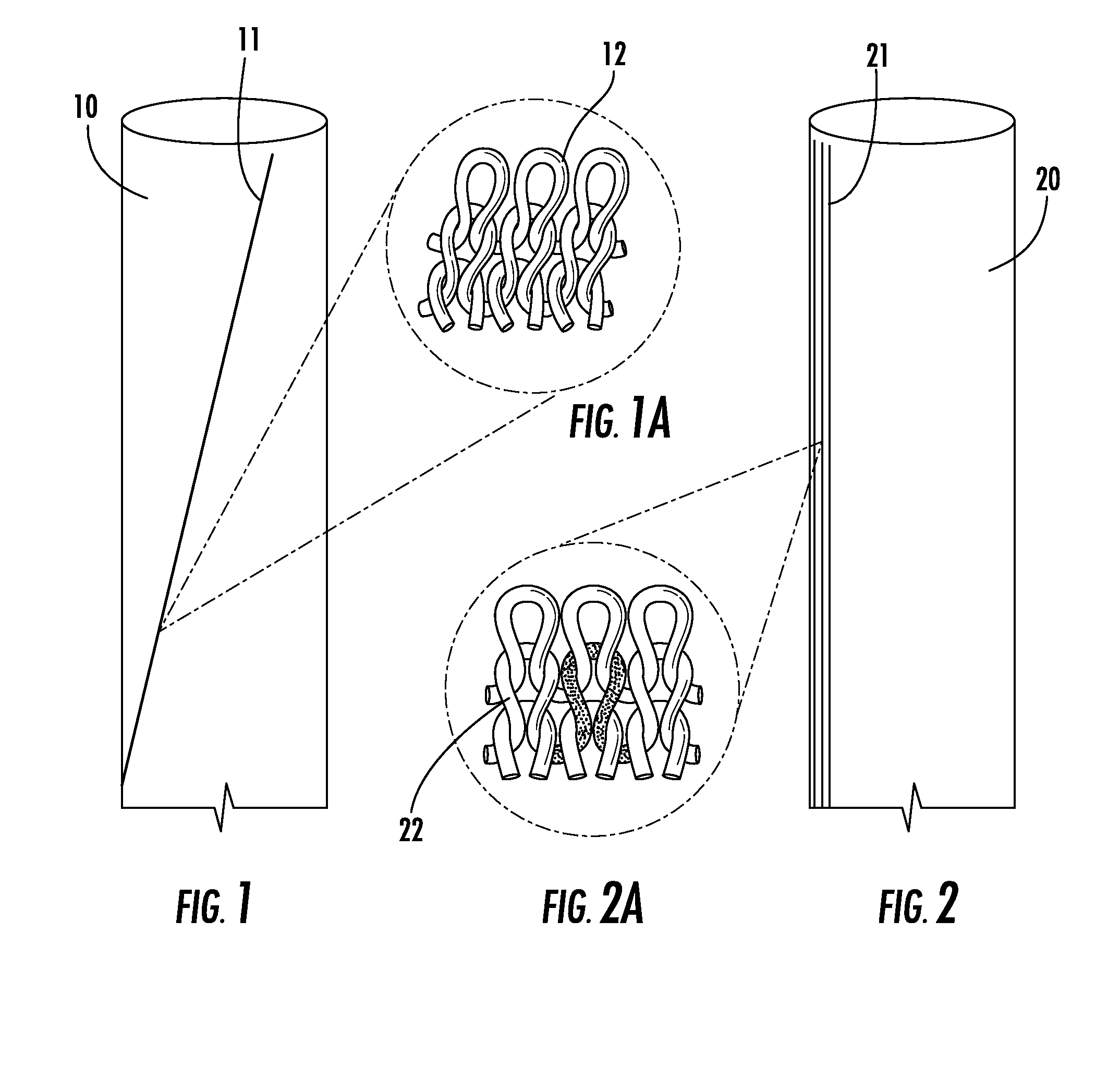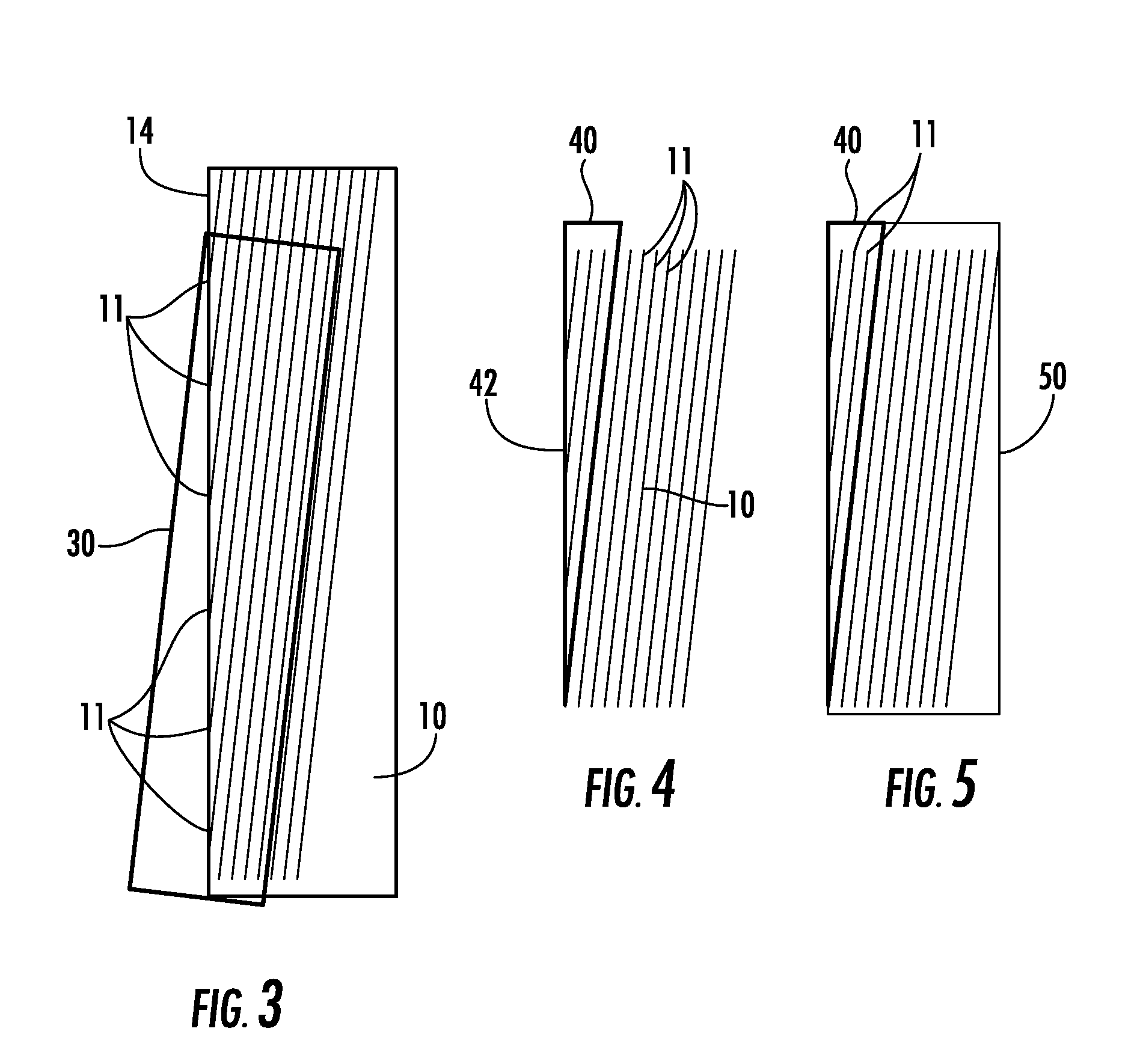Apparatus and method for reducing torque in garments
a technology of fabric and garments, applied in the field of apparatus and methods to reduce torque in fabric and garments, can solve the problems of relatively expensive plied yarns, relatively inaccurate de-twisting at wet processing, and attempts to address fabric torque, etc., and achieve the effect of no torqu
- Summary
- Abstract
- Description
- Claims
- Application Information
AI Technical Summary
Benefits of technology
Problems solved by technology
Method used
Image
Examples
example 1
[0056]The appropriate take-up to cylinder ratio can be calculated by performing the following steps. The number of needles on the cylinder (2088) is divided by the needles skew per inch (eight) to yield a quotient (261). The number of yarn feeds going into the cylinder (120) is divided by the number of courses per inch (52) to yield a second quotient (2.307). The first quotient (261) is divided by the second quotient (2.307) to yield a third quotient (113). The third quotient (113) represents the number of cylinder revolutions. For Z-twist yarn on a knitting machine turning right to left when facing the machine (clockwise when looking down on the machine), one revolution is added to the number of cylinder revolutions (113) to yield a sum (114), which represents the number of revolutions for the take-up, thereby yielding a desired cylinder to take-up rotation ratio of 113 cylinder revolutions for every 114 take-up revolutions. Accordingly, the motor drives 68, 78 and electronic encod...
example 2
[0057]A Z twist 22 / 1 weight ring spun yarn knit on a four feed per diameter inch single jersey knitting machine results in fabric skew of 5.8 needles per inch. To relieve the torque in this fabric, the fabric tube is allowed to de-twist approximately twelve revolutions for each 100 yards. The ratio of cylinder to take-up turns would be 132.25:133.25 to achieve negligible torque. As such, the take-up 70 would make an extra revolution every 132.25 turns of the cylinder (or the take-up would turn 133.25 revolutions to each 132.25 revolutions of the cylinder).
example 3
[0058]A Z twist 18 / 1 weight open end spun yarn knit on a four feeds per diameter inch single jersey knitting machine results in fabric skew of 2.8 needles per inch. The ratio of cylinder to take-up turns would be 164.77:165.77 to achieve negligible torque. The take-up would turn an extra revolution about every 164.77 turns of the cylinder.
[0059]Each fabric processed can have a specification for skew or negligible torque (angle of needles wales versus a vertical line). Fabric can be checked at any process or in garments for correct skew by using the stitch glass aligned to the vertical (folded edge on tubular). By counting the number of needle wales that angle out of the stitch glass on the fabric edge per inch you can establish a value for wale skew. Since this is a non-destructive test it can be performed randomly throughout the batch for ensuring process control. Once the specifications (skew to balance torque) are known tables can be worked out to approximate the value for new fa...
PUM
 Login to View More
Login to View More Abstract
Description
Claims
Application Information
 Login to View More
Login to View More - R&D
- Intellectual Property
- Life Sciences
- Materials
- Tech Scout
- Unparalleled Data Quality
- Higher Quality Content
- 60% Fewer Hallucinations
Browse by: Latest US Patents, China's latest patents, Technical Efficacy Thesaurus, Application Domain, Technology Topic, Popular Technical Reports.
© 2025 PatSnap. All rights reserved.Legal|Privacy policy|Modern Slavery Act Transparency Statement|Sitemap|About US| Contact US: help@patsnap.com



